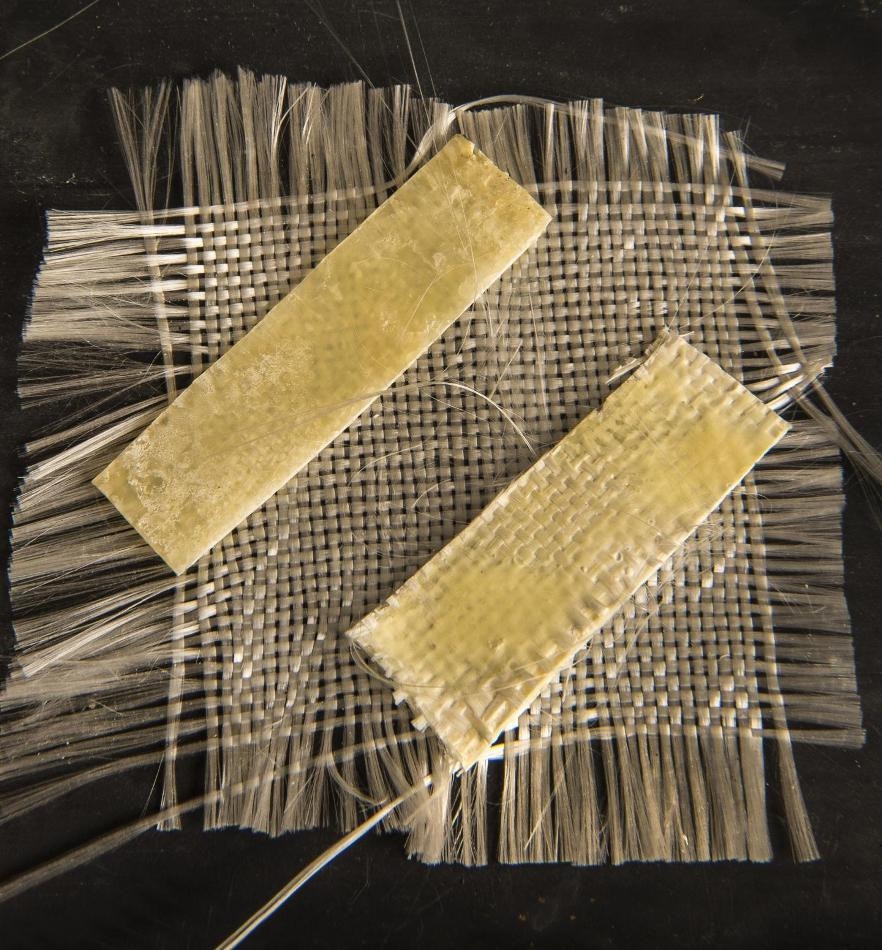Feb 28 2019
A new recycling process has been developed by the researchers at the U.S. Department of Energy’s National Renewable Energy Laboratory (NREL).
 These composite materials, developed by upcycling PET, can be used in wind turbines, snowboards, or materials such as ballistic nylon and reusable bottles that can be used multiple times before being recycled. (Image credit: Dennis Schroeder/NREL)
These composite materials, developed by upcycling PET, can be used in wind turbines, snowboards, or materials such as ballistic nylon and reusable bottles that can be used multiple times before being recycled. (Image credit: Dennis Schroeder/NREL)
This process involves the conversion of clothing, single-use beverage bottles, and carpet made from polyethylene terephthalate (PET), a common polyester material, to more useful products with extended lifetime. This study has been reported in Joule on February 27th, 2019, and could help protect marine ecology from waste plastic products by energizing the recycled plastics market.
PET has attracted great interest from industrialists, owing to its properties such as resistance to water, high strength, lightweight, and shatterproof characteristic. Despite the fact that PET is a recyclable material, a major portion of the 26 million tons generated each year eventually arrive at landfills or at a different place in the environment, where it takes a longer time to biodegrade. However, the process is far from perfection although it is recycled. It can be reused only once or twice as recycled PET has a lesser value than the actual PET.
Standard PET recycling today is essentially ‘downcycling’. The process we came up with is a way to ‘upcycle’ PET into long-lifetime, high-value composite materials like those that would be used in car parts, wind turbine blades, surfboards, or snowboards.
Gregg Beckham, Study Senior Author, Senior Research Fellow, NREL
A new material was obtained by the researchers by combining recycled PET with building blocks obtained from renewable sources like waste plant biomass. This new material was then fused with sustainably sourced, bio-based molecules and recycled PET to produce two different types of fiber-reinforced plastics (FRPs).
In future, plastic bottles made from these FRPs, which are two to three times more effective than the original PET, can possibly have profitable second lives. The research team, in collaboration with the investigators at NREL, has also predicted that using this new recycling process, the energy required by the composite product will be 57% less than that of recycled PET, along with the emission of 40% fewer greenhouse gases than standard petroleum-based FRPs—a meaningful improvement across business in general.
The idea is to develop technologies that would incentivize the economics of PET reclamation. That’s the real hope—to develop ‘second-life’ upcycling technologies that make single-use waste plastic valuable to reclaim. This, in turn, could help keep waste plastic out of the world’s oceans and out of landfills.
Gregg Beckham, Study Senior Author, Senior Research Fellow, NREL
However, more research is required before implementing this new recycling process beyond the research lab. The researchers intend to perform further analyses of the properties of the composite materials, which resulted during the fusion of PET with the plant-based monomers. They have also proposed to test the process for scalability to determine its considerable progress in an industrial setting. Hopefully, they also aim to synthesize composites that can be self-recycled. Therefore, the new composites can remain for years as well as decades but are not automatically recyclable at the end. Furthermore, the NREL team has also aimed at developing similar technologies for recycling different types of materials.
The scale of PET production dwarfs that of composites manufacturing, so we need many more upcycling solutions to truly make a global impact on plastics reclamation through technologies like the one proposed in the current study.
Nicholas Rorrer, Study First Author, Engineer, NREL
This study was supported by the NREL Laboratory Directed Research and Development and the US Department of Energy (DOE) Energy Efficiency and Renewable Energy (EERE) Bioenergy Technologies Office (BETO).